How does an aquaculture facility work?
Wild fish stocks are dwindling, yet global seafood demand is rising. How can we sustainably feed the world? Aquaculture offers a powerful, efficient solution to this growing problem.
An aquaculture facility functions by creating a controlled environment for aquatic life. It involves managing water quality, providing balanced nutrition, and preventing diseases to raise fish, shellfish, or plants efficiently from juvenile stages to market size, ensuring a consistent and reliable seafood supply.
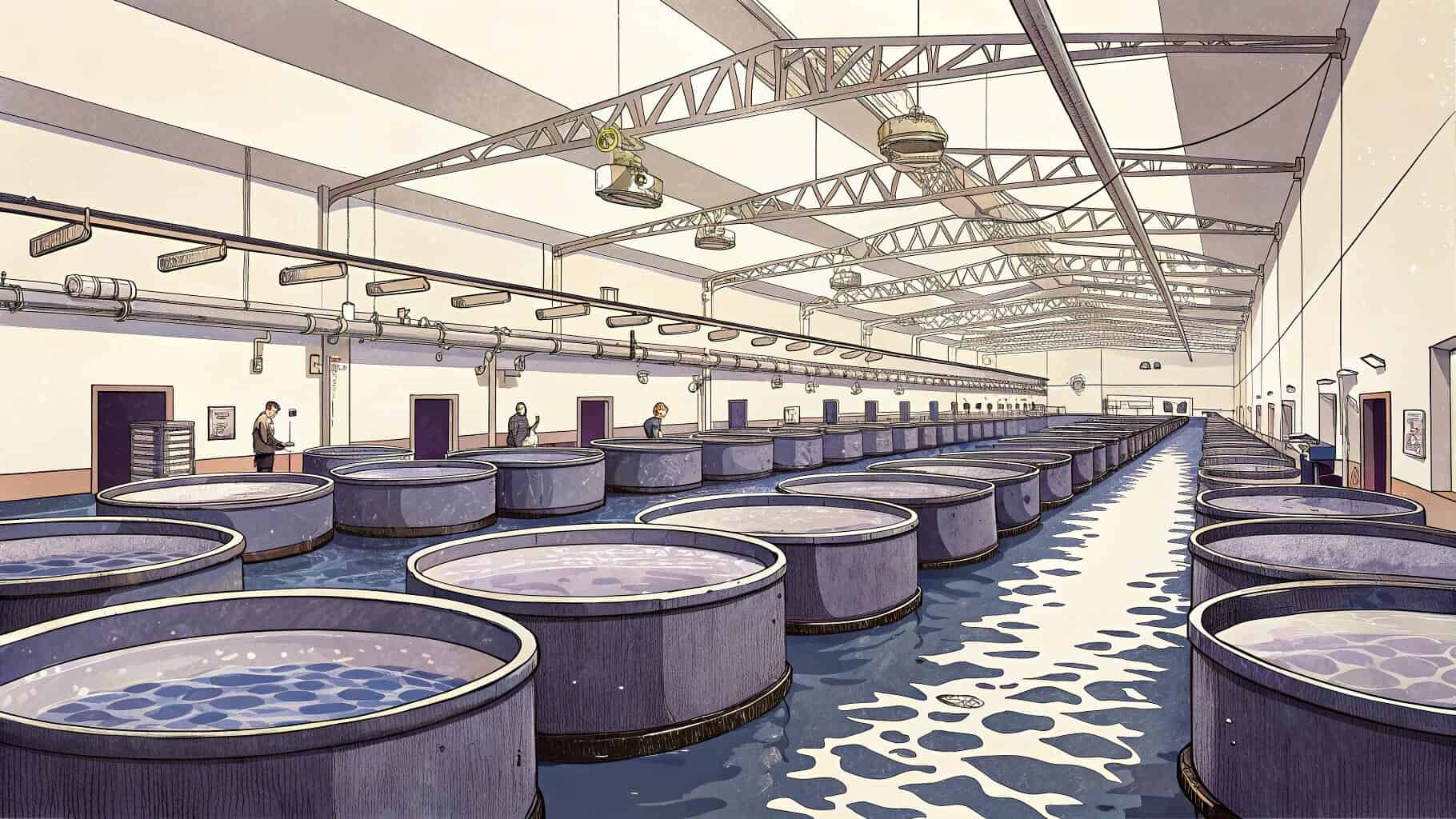
I've seen firsthand how these facilities are more than just "fish farms." They are complex ecosystems engineered for productivity and sustainability. But to truly understand them, we need to look closer at the systems that make them run. It's a journey from the water itself to the global markets, and every step is crucial for success.
How does an aquaculture system work?
Thinking about starting an aquaculture project? The system can seem complex and overwhelming. But breaking it down reveals a clear, manageable process for successful aquatic farming and brings clarity.
An aquaculture system works by balancing three core components: the aquatic organisms (like fish or shrimp), the water they live in, and the feed they consume. The goal is to optimize water quality, nutrition, and health to maximize growth while minimizing waste.
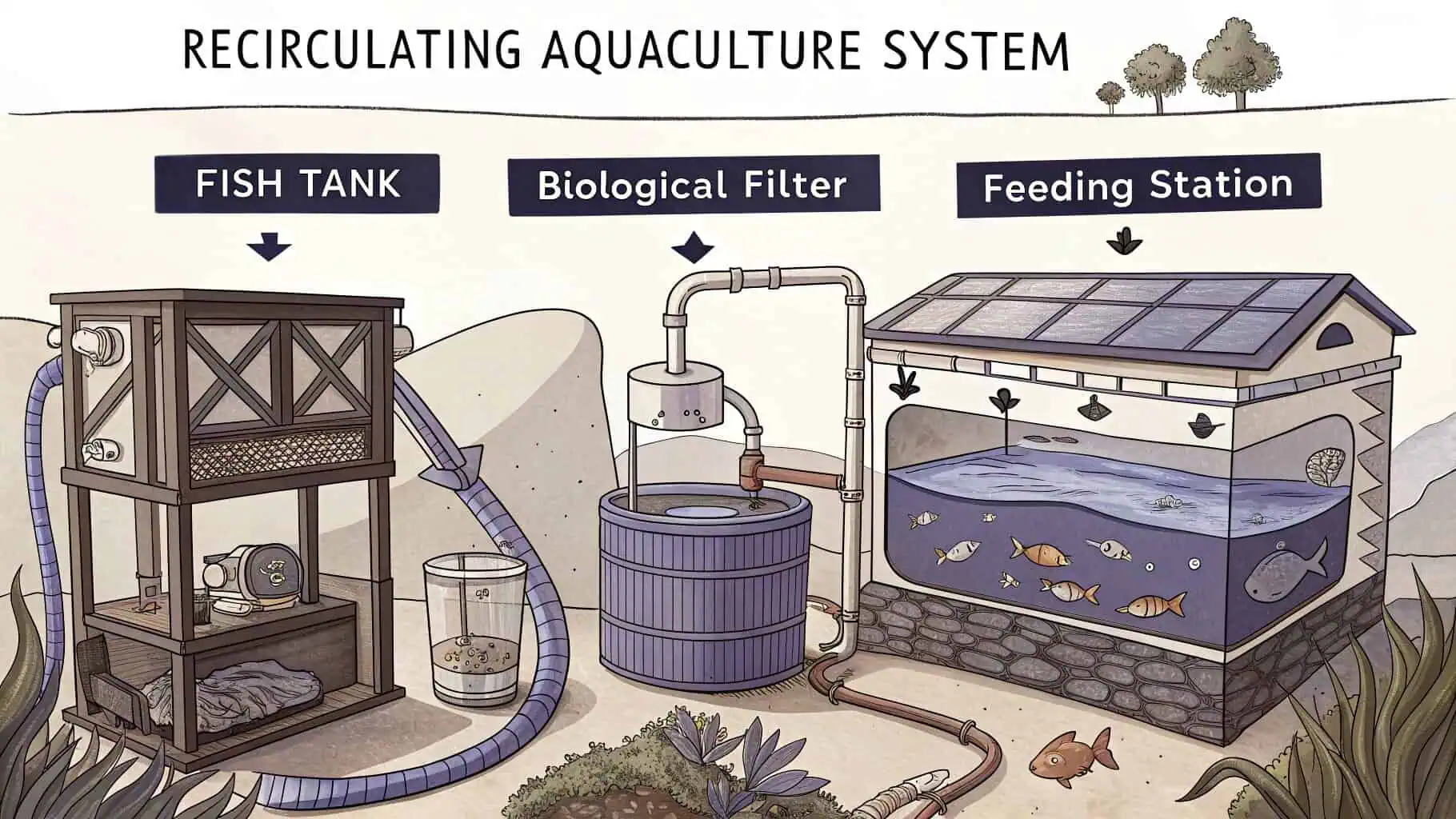
Based on my experience, getting this balance right is both an art and a science. It's about creating a thriving environment where life can flourish under our care. To do this, we have to dive deeper into the essential pillars that support any successful aquaculture operation1. It all starts with the very foundation of aquatic life: water, food, and health.
Water is Everything
At its heart, any aquaculture system is about managing water. I learned early on that you can't just put fish in a tank and hope for the best. You have to constantly monitor parameters like oxygen levels, pH, and ammonia. In recirculating aquaculture systems (RAS)2, for example, water is continuously filtered and reused. This saves a tremendous amount of water but requires sophisticated biofilters to remove toxic waste products that the fish produce. In contrast, open-pen systems in oceans or lakes rely on natural currents to flush away waste, but they face risks from outside pollution, algae blooms, and severe weather. The choice of system often depends on the location, the species, and the investment you're willing to make in technology.
The Right Food for Growth
Feeding is another critical piece of the puzzle. It's not just about giving fish food; it's about giving them the right food at the right time. The nutritional needs of a fish3 change dramatically as it grows from a tiny fry to a market-sized adult. I've worked with feed formulations that were scientifically designed to boost growth rates, improve the immune system, and even enhance the color of the final product. Overfeeding is a huge and common problem—it wastes money and the uneaten food pollutes the water, creating more work for the filtration systems. That's why many modern facilities use automated feeders that dispense precise amounts of food throughout the day, which is much more efficient and better for the fish.
Keeping Disease Away
Where you have a lot of animals living in close quarters, disease is always a major risk. I can't stress enough that preventing outbreaks is far better, and cheaper, than treating them. This means maintaining strict biosecurity protocols, like keeping the facility clean, quarantining any new animals before introducing them to the main population, and doing everything possible to reduce stress on the fish. Good water quality and proper nutrition are the first and most important lines of defense. When problems do arise, it's about quick diagnosis and targeted treatment, avoiding the broad overuse of chemicals or antibiotics that can harm the environment and lead to resistance.
| Component | Key Focus | Common Challenges |
|---|---|---|
| Water Management4 | Oxygen, pH, Ammonia Levels | Waste removal, pollution, temperature control |
| Nutrition & Feeding5 | Balanced diet, growth stages | Overfeeding, feed cost, water contamination |
| Health & Disease | Biosecurity, prevention | Outbreaks, stress, chemical use |
What is an aquaculture park and how does it work?
A single farm often faces many challenges alone, from waste disposal and high energy costs to market access. What if farms could work together? An aquaculture park creates a powerful, collaborative ecosystem for sustainable growth.
An aquaculture park is a large, organized area where multiple aquaculture farms operate together. It works by sharing critical infrastructure like water treatment facilities, feed mills, and processing plants. This collaboration improves efficiency, reduces costs, and promotes sustainable practices through resource recycling.
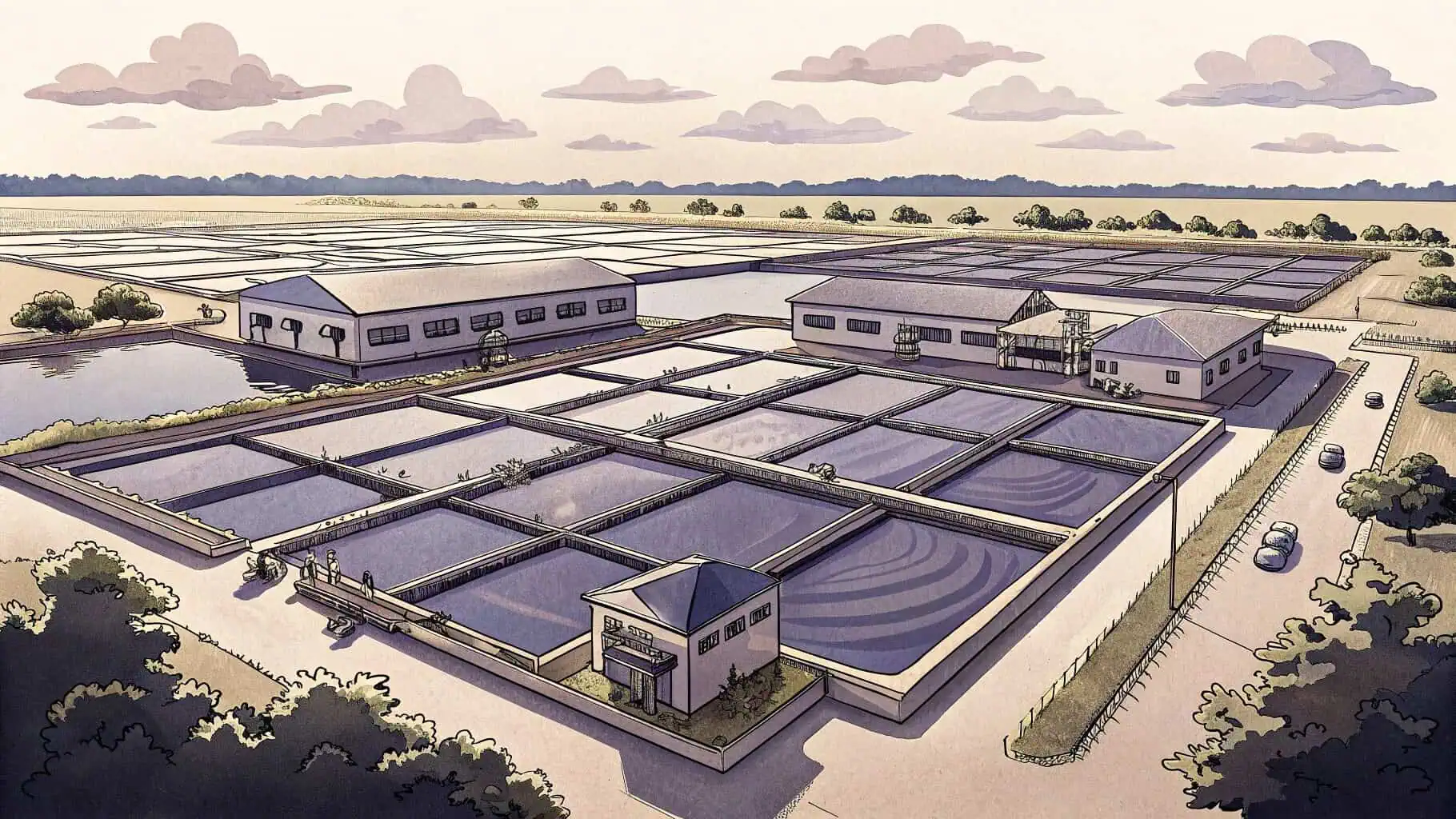
The idea of a park is a game-changer for the industry. It transforms the traditional, isolated farming model into a connected, industrial ecosystem where the sum is truly greater than its parts. This approach fosters a sense of community and shared responsibility6, which is essential for long-term success.
Strength in Numbers
I find the concept of aquaculture parks fascinating because it's all about synergy. Instead of each farm having its own water intake and discharge pipes, the park has a centralized system. This means waste from one farm can be efficiently treated and potentially used as a resource for another. For example, the nutrient-rich water from a fish farm could be channeled to grow algae or seaweed, which can then be harvested for use in animal feed or other products. This is a concept known as integrated multi-trophic aquaculture (IMTA)7, and it's a brilliant way to turn a waste problem into a value stream, mimicking the cycles of a natural ecosystem.
Running an aquaculture business is expensive. The initial investment and ongoing operational costs for equipment, feed, and energy can be very high. In an aquaculture park8, these costs are shared among all the tenants. Farmers can buy feed in bulk to get better prices, share expensive monitoring equipment, and use a common processing facility to prepare their products for market. This significantly lowers the barrier to entry for smaller producers and makes the entire operation more economically resilient. It also helps in creating a stronger, unified brand for the products coming from the park, which can lead to better recognition and prices in the market.
A Hub for Innovation
These parks often become centers for research and development. With many producers, researchers, and suppliers in one place, it's easier to test and adopt new technologies, like AI-powered monitoring systems, alternative protein feeds, or more efficient renewable energy solutions. Government agencies and universities might partner with the park to conduct research, bringing in new knowledge and expertise. This collaborative environment accelerates the pace of innovation and helps the entire industry move forward, tackling big challenges like disease control, genetic improvement, and overall sustainability more effectively than any single farm could on its own.
| Benefit | Description | Example |
|---|---|---|
| Synergy & Recycling9 | Waste from one farm becomes a resource for another. | Fish waste water irrigates seaweed crops. |
| Shared Resources | Centralized infrastructure reduces costs for individual farms. | Shared feed mills, processing plants, and labs. |
| Innovation Hub10 | Collaboration accelerates adoption of new technologies. | Joint research on new feeds or disease control. |
What is an aquaculture facility?
You hear the term "aquaculture facility" a lot, but what does it actually mean? It can sound very industrial and complex. In reality, it's simply a dedicated place for farming aquatic life.
An aquaculture facility is any man-made structure or designated area used to grow aquatic organisms. This can range from simple earthen ponds and coastal net pens to highly controlled indoor tank systems. Its purpose is to provide a managed environment for breeding and growth.
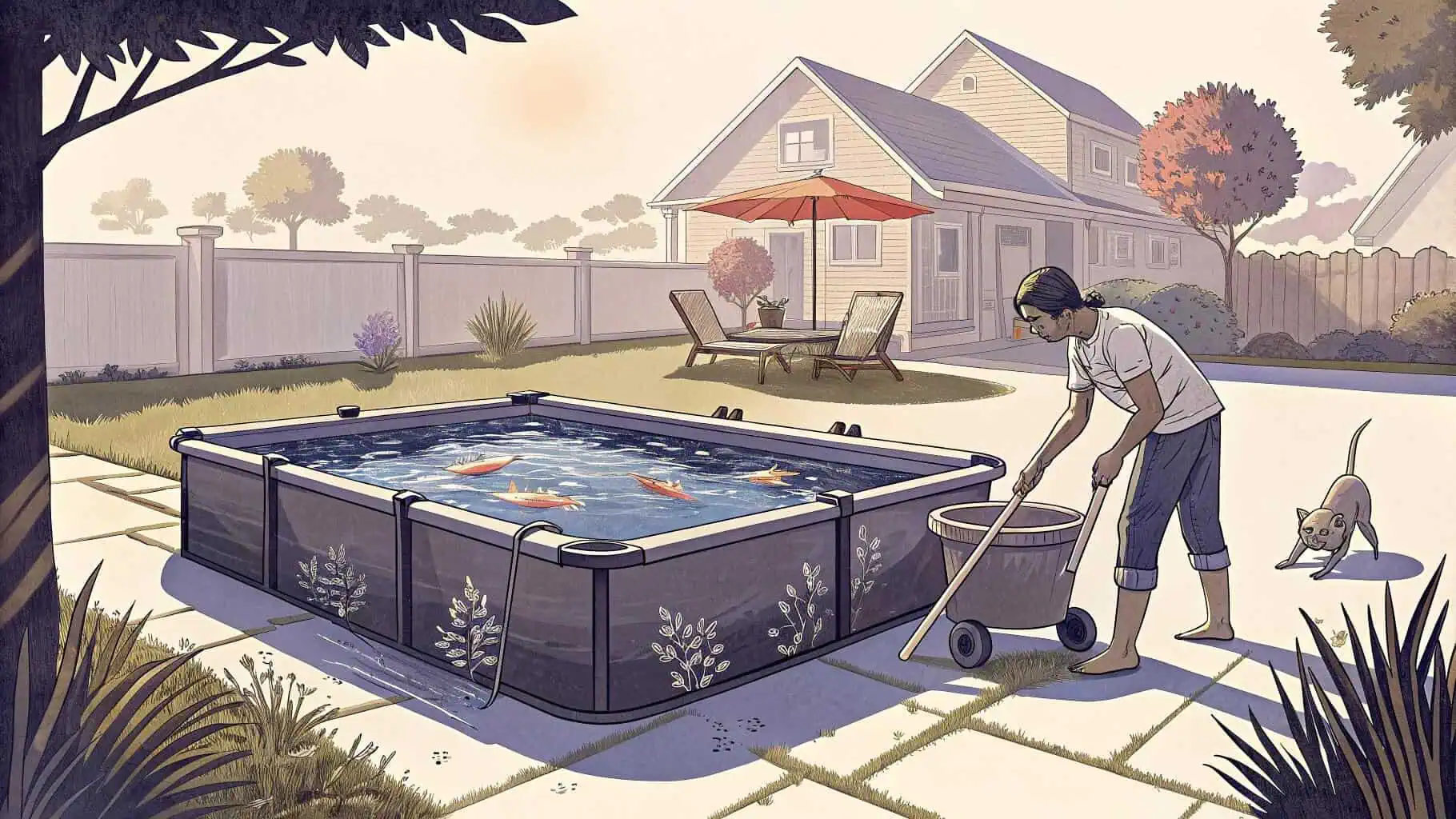
The beauty of aquaculture is its diversity, and the facilities reflect that. From the simplest pond dug by hand to a fully automated indoor farm11, each facility is designed to meet a specific need. It's this adaptability that makes the industry so resilient and widespread across the globe.
From Simple Ponds to High-Tech Tanks
The diversity of facilities is amazing. In many parts of Asia, I've seen vast networks of earthen ponds used to raise species like tilapia or shrimp. These are relatively simple to build and operate, relying on natural processes. On the other end of the spectrum, you have facilities that use products like our Bancy collapsible fish tanks12. These offer incredible flexibility. We provide tanks with strong galvanized pipe or sheet frames, which are very durable and resistant to corrosion. We also have plastic tube tanks that are lightweight and easy to set up. These are perfect for everything from small-scale, semi-commercial fish farming to temporary pools for events or water storage on construction sites.
Key Components of a Facility
No matter the type, most facilities share common components. You need a structure to hold the water, like a pond, tank, or net pen. You need a reliable water source and a way to manage its quality, which could involve pumps, filters, and aerators to add oxygen. You also need systems for feeding the animals and for harvesting them when they are ready for market. For our customizable tanks13, we work closely with clients to help them choose the right size and material based on their specific needs, whether it's for raising a particular fish species or for storing water for irrigation.
Customization is Key
One thing I've learned over many years in this business is that there's no one-size-fits-all solution in aquaculture. The best facility depends on the species being farmed, the local climate, the available resources, and the business goals. That's why we focus on highly customized solutions at Bancy. We can provide our tanks in almost any size, use different materials for the liner and frame, and even add a company logo for branding. This flexibility allows our clients—from professional fish farmers and researchers to event organizers and construction managers—to get a product that perfectly matches their unique requirements and helps them succeed.
| Facility Type | Description | Best For |
|---|---|---|
| Earthen Ponds14 | Simple, low-cost ponds dug into the ground. | Large-scale farming of robust species like tilapia. |
| Net Pens | Cages placed in open water like lakes or oceans. | Farming fish in their natural environment. |
| Bancy Collapsible Tanks | Customizable, durable, and portable frame tanks. | Flexible needs: research, small-scale farming, temporary storage. |
| Indoor RAS15 | High-tech, controlled indoor tank systems with water recycling. | High-value species, urban farming, biosecure environments. |
What is an example of aquaculture AP Human Geography?
How does fish farming shape our world and its people? It might seem like just another way to produce food. But aquaculture is deeply connected to culture, economy, and the environment.
A great example for AP Human Geography is shrimp farming in Southeast Asia. It clearly shows how an agricultural practice can transform coastal landscapes, create complex economic opportunities and challenges, and connect local communities to global trade networks.
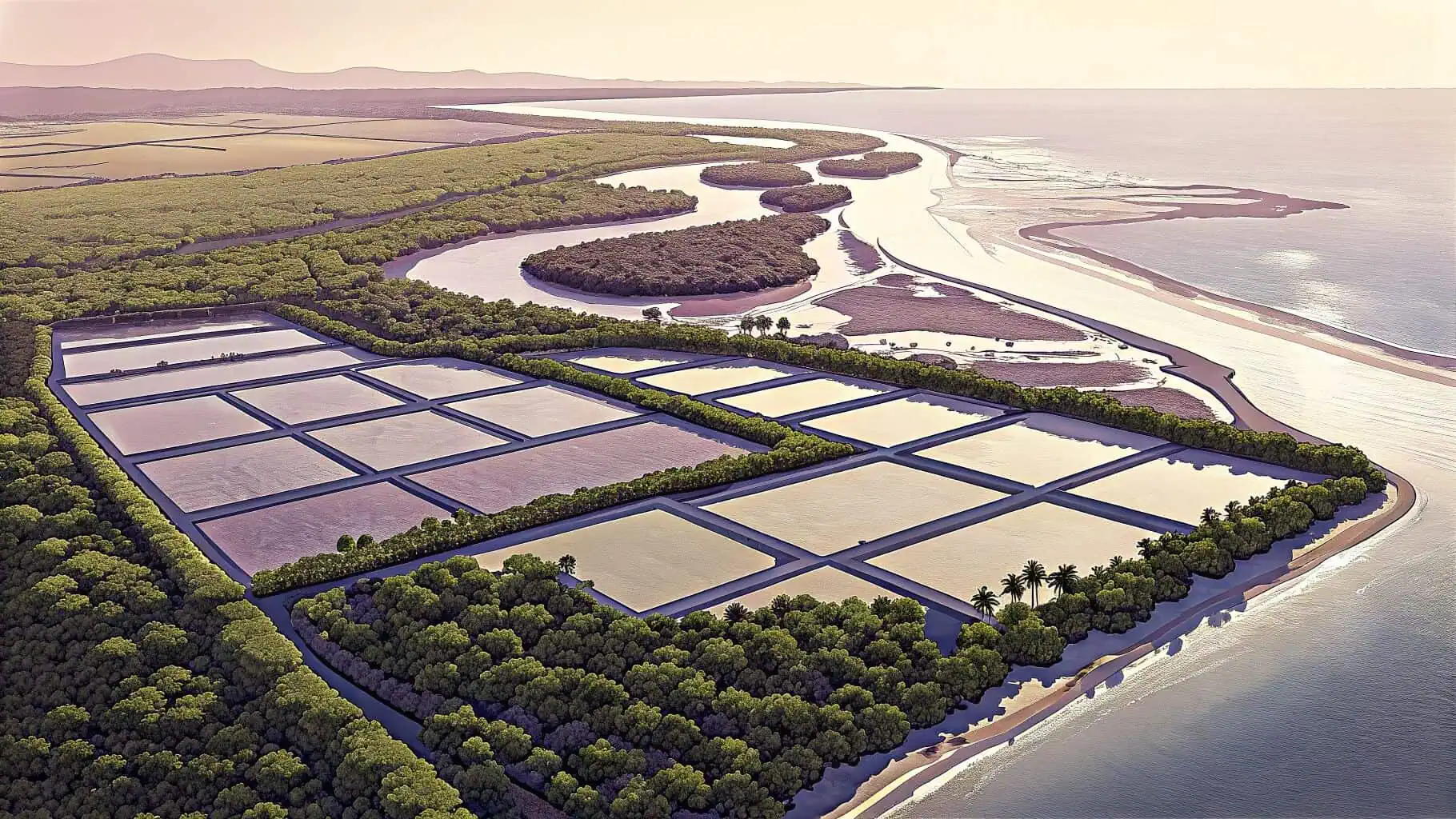
This example is powerful because it touches on so many core themes of human geography16: human-environment interaction, economic development, globalization, and cultural change. It’s a story of how our appetite for a single product can reshape the planet and the lives of millions of people.
Changing Landscapes and Livelihoods
Think about the coastal areas of countries like Thailand, Vietnam, or Ecuador. Historically, many of these areas were covered in dense mangrove forests, which are incredibly important ecosystems. The explosion in global demand for shrimp, starting a few decades ago, led to the clearing of vast areas of mangroves to build shrimp ponds17. This is a classic example of humans modifying the environment for agriculture. On one hand, it created jobs and brought a new source of income to many poor rural areas. On the other hand, the loss of mangroves removed natural barriers that protected coastlines from storms and destroyed critical habitats for wild fish, crabs, and birds.
Local Production, Global Markets
Shrimp farming is a perfect illustration of our globalized food system. The shrimp are raised by farmers in small coastal communities, but they are quickly processed, packaged, frozen, and shipped to fill supermarket shelves in Europe, North America, and Japan. This connects a local farmer to a complex web of international trade18, investment, and consumer demand. The price a farmer in Thailand gets for his shrimp can be directly affected by a new food trend in New York, a food safety scare in Europe, or a new trade policy enacted by the World Trade Organization. This shows the powerful interdependence of places in our modern world.
The Human-Environment Interaction
This example forces us to look closely at the relationship between humans and their environment. Early, intensive shrimp farming often led to severe water pollution from excess feed and waste, as well as widespread disease outbreaks that could wipe out entire farms. This sometimes created a destructive cycle of boom and bust, where land was abandoned after it became too polluted. Today, there is a growing movement towards more sustainable practices, such as restoring mangroves alongside shrimp ponds, using less intensive farming methods, or moving to closed-loop systems that treat and reuse water. This reflects a changing understanding of how we must balance economic development with long-term environmental protection.
| Aspect | Positive Impacts (Pros) | Negative Impacts (Cons) |
|---|---|---|
| Economic | Creates jobs, increases income, connects to global trade. | Market volatility, high initial investment, benefits not always local. |
| Environmental | Can be a sustainable protein source19. | Mangrove destruction, water pollution, disease spread. |
| Social/Cultural | Provides food security20, introduces new skills. | Land use conflicts, displacement of traditional livelihoods. |
Conclusion
Aquaculture is more than just farming fish; it's a vital, innovative field. From simple ponds to complex parks, it's about sustainably meeting global demand while navigating tough environmental and economic challenges.
-
Understanding the key components can help you optimize your aquaculture practices for better yields. ↩
-
Explore this link to understand how RAS can enhance sustainability and efficiency in fish farming. ↩
-
Understanding fish nutrition is vital for optimal growth and health. Explore this link to learn how to meet these needs effectively. ↩
-
Explore effective strategies for managing water quality, crucial for fish health and growth. ↩
-
Learn about balanced diets and feeding techniques to enhance growth and reduce costs. ↩
-
Discover the importance of community in agriculture and how it contributes to sustainable farming practices. ↩
-
Explore this link to understand how IMTA transforms waste into valuable resources, enhancing sustainability in aquaculture. ↩
-
Explore how aquaculture parks can reduce costs and enhance collaboration among farmers, leading to a more sustainable business model. ↩
-
Explore how Synergy & Recycling can transform waste into valuable resources, enhancing sustainability in farming. ↩
-
Discover how Innovation Hubs foster collaboration and speed up the implementation of cutting-edge agricultural technologies. ↩
-
This resource will explain the technology behind automated indoor farms, showcasing innovations in agriculture and food production. ↩
-
Discover the innovative features of Bancy collapsible fish tanks and their applications in modern aquaculture. ↩
-
Customizable tanks can optimize your aquaculture setup. Discover how they can meet specific needs and improve efficiency. ↩
-
Explore the advantages of Earthen Ponds for cost-effective and sustainable fish farming. ↩
-
Learn how Indoor RAS can enhance fish farming with advanced technology and sustainability. ↩
-
Exploring this link will deepen your understanding of human geography's impact on society and the environment. ↩
-
This resource will provide insights into the environmental consequences of shrimp farming and its effects on biodiversity. ↩
-
This resource will provide insights into the dynamics of international trade and its influence on local agricultural markets. ↩
-
Exploring this link will provide insights into how sustainable protein sources can benefit health and the environment. ↩
-
Understanding food security is crucial for grasping its role in community stability and development. ↩